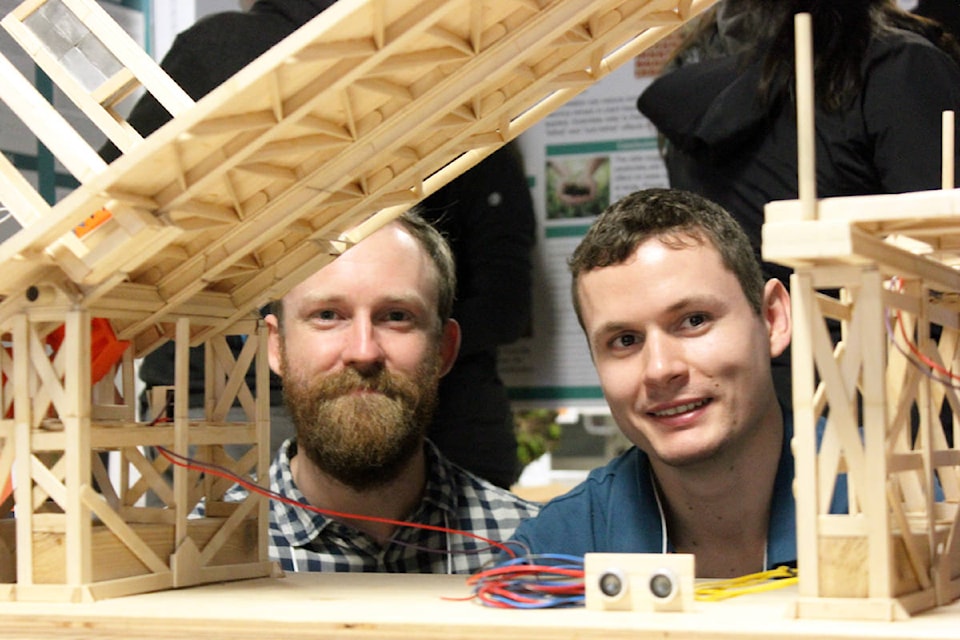A small-scale wooden bridge capable of opening up for ships passing underneath was just one of the hundreds of research projects on display in Nanaimo last week.
Created by Wesley Dunn, Allen Stenlund, Jennifer White and Wilson Nguyen, the 1.2 metre-long bascule bridge is made entirely of popsicle sticks and comes complete with a working sensor and gear system.
“This bridge probably has about 750 popsicle sticks on it,” Dunn said.
Dunn and Stenlund, both VIU engineering students, said they were required to build a fully functional bridge that could theoretically be installed in Alphen, a city in the Netherlands.
“We actually implemented some of the things into this bridge as well that would be in the Netherlands. These light posts are actually the traffic lights that they have in the Netherlands,” Dunn said.
The project required them to follow a certain set of guidelines, which led the group to create a movable bridge that could lift up to allow ships to safely pass under it.
“One of the hardest challenges for us was trying to get the moving gear mechanism ready,” Stenlund said.
The popsicle bridge was one of the projects featured at the Create Conference, which took place at Vancouver Island University on Wednesday.
Nicole Vaugeois, VIU professor and associate vice-president of scholarship, research and creative activity, said the annual event is an opportunity for students to show off their research, adding that student projects are usually only shared with the faculty and other students and rarely with the outside world.
“Research doesn’t have impact until it is shared in the public realm,” she said. “For a lot of students this is the first time that they share their work here with outside people. It kind of raises the bar for their learning and for us this is a celebration. This is what university is all about.”
Student participation in the event is up by more than 70 per cent this year according to Vaugeois, who said the conference also gives students the opportunity to speak with the general public at about their work.
“A lot of researchers are very good at their discipline but they have difficulty answering the questions of what does this mean and how can this be useful in the world. Students have to learn how to translate their knowledge to the general public because if they can’t, their research isn’t going to have an impact,” she said.
The projects on display touched on range of issues and subject matter, such as in surviving natural disasters in Nanaimo to walkability in Parksville. Although many of the projects focus on local or regional topics or issues, Vaugeois said students often don’t get the chance to share their work with people from the relevant organizations that their research deals with, such as the City of Nanaimo.
“Some of these are done in consultation with an outside body and they would be receiving that [information], but a lot of them don’t,” she said. “That’s a part of what this event is all about, bringing them to the public realm.”
